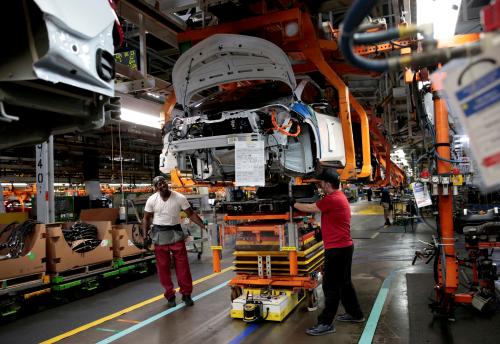Comprehensive, efficient air travel is a hallmark of modern economies. This is obvious in China, where rapid growth of air passengers and air hubs has accompanied its economic boom.
To meet growing demand, as well as improve connectivity for crisis situations, the Chinese government has made developing its general aviation industry a key feature of its 12th Five-Year Plan. To that end, China is opening up the nation’s airspace to increased private use. And both the government and firms are investing at scale in aviation infrastructure, ordering billions worth of foreign-produced planes, and ultimately aiming to develop a significant domestic aircraft production capacity.
Aerospace industry development, however, is immensely challenging, mastered by firms in just a few industrialized nations.
So perhaps no city is better prepared to help meet China’s massive demand in general aviation than Wichita, Kansas. The longtime “Air Capital of the World” is home to a vibrant general aviation cluster, including companies like Bombardier, Cessna, Hawker Beechcraft, Spirit Aerosystems and Airbus, as well as more than 200 other small and medium-sized firms. It is also best-in-class in aerospace-related workforce development, housing the National Center for Aviation Training (NCAT). As my colleagues Joe Parilla and Alan Berube detail in MetroTrade, Wichita’s aerospace cluster is an “export powerhouse,” and supplied 48 percent of all global general aviation deliveries in 2012.
With the lingering recession and federal cutbacks threating some of the region’s domestic business, Wichita is looking to China to find new buyers of its aviation goods and services. Where to start? Metropolitan leaders, led by Kansas Global Trade Services (KGTS), have opened an office in Beijing and are developing a series of partnerships with China’s aircraft hubs to supply parts and services and aviation infrastructure for that market.
In order to capitalize on what Karyn Page, president and CEO of KGTS describes as “the largest aviation opportunity in history,” city leaders signed trade agreements with leaders in the Chinese general aviation hubs of Xi’an and Shenyang, building on existing supply chain relationships.
As part of these partnerships, Wichita and regional leaders in China have matched their respective expertise and needs, and have prioritized aircraft maintenance and repair training, tied to the NCAT, as well as aircraft parts, as promising areas for increased trade.
Other U.S. aerospace hubs like Seattle, Phoenix and Los Angeles should take note: Distinctive clusters and international supply chains that connect each of these metro areas with rising demand in developing markets offer a unique set of global metropolitan partners to leverage new trading relationships.
But economic linkages weren’t the only factor in creating Wichita’s specific partnerships. Metropolitan leaders were also looking to connect with cities in China that have a demonstrated record of success in industrial development, and an openness to learn. They were also looking for regions with a leadership class that could commit to a long-term relationship.
Wichita’s relationships with Xi’an and Shenyang are aimed at the city-to-city level in order to “open doors for companies to walk through,” according to Page. And they will ensure that firms in China have easy access to those in Wichita, cutting through bureaucratic, logistical and even cultural barriers that make international trade difficult.
If Chinese firms are interested in buying an aircraft, Wichita Mayor Carl Brewer explained recently, “they can go to our partners [KGTS] and get information. The more planes we have out there, the more suppliers we have involved, the more additional jobs are created.”
The initiative featured here emerged from work supported by the Global Cities Initiative: A Joint Project of Brookings and JPMorgan Chase. Brookings recognizes that the value it provides is in its absolute commitment to quality, independence, and impact. Activities supported by its donors reflect this commitment and the analysis and recommendations are solely determined by the scholar.



Commentary
Wichita Looks to China for Aviation Trade Boost
July 21, 2014